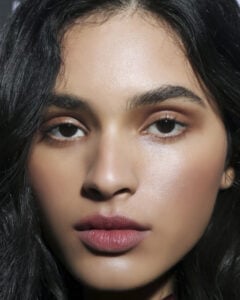And now the moment you’ve all been waiting for… a recipe for DIY beard oil! Sure there are hundreds of beard oils already on the market but when you DIY, you can create a blend that works best for your own personal wants and needs.
For this particular recipe, we use Castor Oil as the base. Castor oil offers a host of beard-benefits. However, because of its consistency and the drying effect it has on skin, it’s pretty difficult to apply on its own and tends to work better when it’s blended with other carrier and essential oils.
If Castor oil doesn’t work for your beard and/or your skin, it’s as easy as swapping it out for argan oil. You’ll have to use a bit more but you’ll get a moisturizing beard oil that smells great and protects your hair and skin.
We break down the difference between carrier oil and essential oil below, so you can use our Castor Oil recipe or you can start fixing your own blends.
CARRIER OILS
First, let’s talk carrier oils. By making your own special blends, you can target the areas you need the most help with. Whether it be hydration, growth, thickness, or any other beard-related concern you might have, DIY’ing your beard oil maximizes the chances of getting what you want – and we all love getting what we want.
Below we review the various carrier oils that have beard-beneficial advantages. Anyone of these can be used on its own or in combination with another as the base of your beard oil.
JOJOBA
This carrier oil is incredibly light, which will help balance the thickness of the castor oil. Its quick absorption rate and light moisturizing effect make it great for use on skin that tends to be oily. When mixed with castor oil, jojoba is especially helpful for providing hydration and nourishment to a dried-out beard plagued by split ends. For more on how jojoba works on your beard, check out our Castor Oil for Beard article (link).
ARGAN
A lightweight, skin softening carrier oil, argan is as good for the hair on your face as it is for the hair on your head. Outside of its hydrating and softening qualities, argan is also a powerful antioxidant that will have positive effects on the skin beneath all that luscious facial hair. Want to know more about argan oil and its effect on your beard (and skin)? Check out our Castor Oil for Beard guide here (link).
SWEET ALMOND OIL
Sweet Almond Oil: With high concentrations of protein, vitamins and minerals like biotin and magnesium, sweet almond oil is a carrier oil jam-packed with beard-goodness. Besides its excellent anti-inflammatory properties that will help ease any ingrown hairs or acne on the skin under your beard, sweet almond oil combats the drying effects of castor oil and treats flaky skin and beardruff.
COCONUT OIL
Got a skin problem? Coconut oil. Got a hair problem? Coconut oil. Got girlfriend troubles? Coconut oil. Ok, maybe the last one is a stretch but this versatile oil really is good for everything – including your beard! Coconut oil is a powerful moisturizing agent that also works to protect your beard from damage. It’s a perfect carrier oil to blend with castor oil if you live in a dry and cold climate.
HAZELNUT OIL
If eczema or acne are your problems, hazelnut oil is your solution. Use this carrier oil if the skin under your beard is your biggest concern.
CASTOR OIL
This is the base of our own DIY blend. The ricinoleic acid found in castor oil has multiple benefits for helping the growth of your mane. Blending castor oil with other carrier oils makes it more fluid, less messy and also increases its efficacy. Keep in mind that it’s customary to use no more than 10% castor oil for any given recipe and you’re well on your way to customizing your DIY beard oil.
ESSENTIAL OILS
Essential oils are the second component to making your custom beard oil. Although not an essential component (pun intended) essential oils can offer antifungal, antibacterial, healing and aromatherapeutic benefits.
Because these are volatile and powerful plant and flower essences, they need to be diluted with a carrier oil (or a blend of carrier oils). You generally only need 2-4 drops of one of these to enhance the effects of your carriers:
- Cedarwood, Pine, Cypress, Patchouli, Sandalwood, Clove: Castor Oil lacks a pleasant scent. Adding a few drops of one of these will make your blend smell rich, warm and manly. Bonus: cedarwood also prevents acne.
- Peppermint oil: This EO is proven to stimulate hair growth, if the length and thickness of your facial hair are not up to your standards.
- Eucalyptus, Tea Tree: Antifungal, antibacterial, and anti-inflammatory, these EO’s will help nourish and sooth the skin from any irritation.
- Lemongrass, orange, and lime: Not only do these smell fresh and invigorating, they also have antibacterial and antifungal properties.
- Lavender oil: Well-known for its calming and relaxing effects in aromatherapy, lavender is also moisturizing and has antimicrobial properties that fight beardruff.
- Frankincense: Not only an antioxidant, this ancient oil is healing and will ease any skin irritation.
- Amla: If you live in a cold climate and deal with dry, brittle, damaged beard hair, this EO is an excellent addition to your castor oil blend.
DIY BEARD OIL RECIPE
This very basic recipe is a good place to start for those less-crafty folks wanting to give DIY a try. You can alter this recipe in a number of ways and we’ll give you those tips too.
WHAT YOU’ll NEED
One tablespoon of coconut oil (liquefied)
3-4 drops of peppermint oil
20 drops of castor oil*
*Castor Oil isn’t your thing? Try using two tablespoons of argan oil instead. This will make for a moisturizing beard oil that’s far more lightweight and easily absorbed. Plus you’ll get all the goodness of the antioxidants contained in argan oil, taking care of your hair and the skin that lies beneath it.
TO MAKE
Blend all ingredients together using a whisk to ensure they emulsify
Place in a dark glass container to ensure longevity
Do not place in refrigerator because this will cause the coconut oil to harden
SOME TIPS
For acne prone skin, you can add a tablespoon of jojoba oil and a drop of tea tree oil. The jojoba will treat acne and blemishes while the tea tree oil will provide anti-fungal and anti-bacterial properties (and also compliment the scent of the peppermint oil).
For a stronger, more manly scent, try adding two drops each of Cedarwood oil and Sandalwood oil. If you go this way, make sure you decrease the peppermint oil to only one or two drops.
If dry or damaged hair is your issue, add a teaspoon of argan oil and two drops of Amla. Both of these oils have powerful hydrating qualities and the argan oil will also act as protective barrier against harsh climate.
FINAL THOUGHTS
With so many products ready to pull off of a shelf and apply, it’s hard to know which one will work best. Even if you do have a go-to beard oil, it probably doesn’t contain the host of ingredients you require to target all of your beard related needs. With the ample availability of carrier oils and essential oils, it’s incredibly easy to create your own beard oil blends that favour your unique desires. Use our simple DIY recipe as a starting point and you can use all the info we’ve provided to build your blend from there. With DIY beard oils, keeping your beard looking great has never been so simple and affordable.



